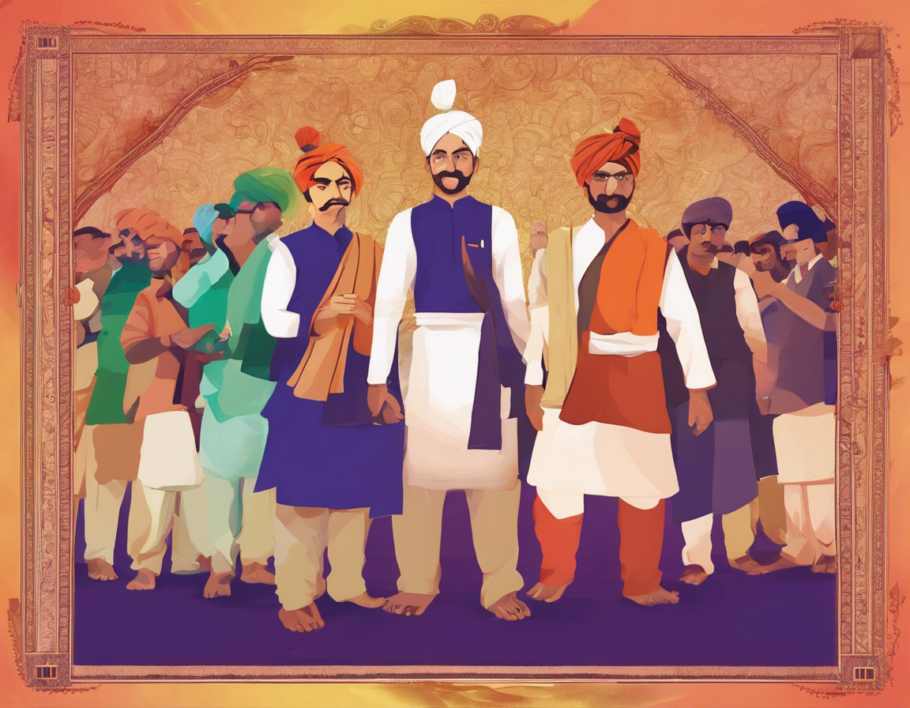Rahim Das, also known as Rahim Ke Dohe, was a poet in the court of Mughal emperor Akbar. His writings have left an indelible mark on Indian literature and are revered for their wisdom, moral values, and simplicity. The Dohe are couplets in Hindi that encapsulate deep philosophical thoughts and life lessons in a concise manner. They are often used to impart moral values and teachings to students in schools.
For students in Class 9, studying Rahim Ke Dohe can be a rewarding experience. It not only helps in understanding the cultural and literary heritage of India but also provides insights into human nature and moral values. In this guide, we will explore the significance of Rahim Ke Dohe, their themes, and some of the popular couplets that are often included in the curriculum.
Importance of Studying Rahim Ke Dohe
Studying Rahim Ke Dohe is not just about learning literature; it is about imbibing timeless wisdom that is relevant even in today’s world. The couplets touch upon various aspects of life, relationships, morality, and spirituality, making them universal in their appeal. By delving into the Dohe, students can broaden their horizons, enhance their critical thinking skills, and develop a deeper understanding of human emotions and behavior.
Themes in Rahim Ke Dohe
The Dohe by Rahim Das cover a wide range of themes that are deeply rooted in Indian culture and philosophy. Some of the prominent themes include:
1. Morality and Ethics
Rahim’s couplets often emphasize the importance of leading a moral and ethical life. They highlight the virtues of honesty, integrity, compassion, and righteousness.
2. Human Relationships
The Dohe also delve into the complexities of human relationships, including those between parents and children, friends, and society at large. They offer insights into building harmonious relationships based on trust and respect.
3. Spirituality
Rahim’s writings reflect his spiritual inclinations and beliefs. Many of his couplets touch upon the transient nature of life, the concept of Karma, and the path to spiritual enlightenment.
4. Social Justice
Social justice is another recurring theme in Rahim Ke Dohe. The poet advocates for equality, compassion towards the less fortunate, and standing up against injustice and oppression.
Popular Rahim Ke Dohe
Here are some of the popular Dohe by Rahim Das that are often studied by students:
- रहिमन पानी रखिये, बिन पानी सब सून, पानी गये न उबरे, मोती मानुष चून॥
- बिगरी बात बने नहीं, नीचे सिर उचाओ, राम समान फल पावै, जब बोले अति काम।
- रहिमन देख बड़ेन को, लघु न विषाद दूर, जो धरम संधे मिट सके, नीच ते ऊपर तूर।
How to Download Rahim Ke Dohe Class 9 PDF?
To access Rahim Ke Dohe Class 9 PDF, you can follow these steps:
- Visit the official website of the educational board or institution where you are studying.
- Look for the “Resources” or “Study Material” section on the website.
- Search for “Rahim Ke Dohe Class 9 PDF” in the search bar.
- Once you find the relevant link, click on it to initiate the download process.
- Save the PDF file to your device for offline access.
Frequently Asked Questions (FAQs)
1. Why are Rahim Ke Dohe important for students in Class 9?
Studying Rahim Ke Dohe helps students in understanding moral values, ethical principles, and human relationships in a nuanced manner. It also enhances their vocabulary, comprehension skills, and critical thinking abilities.
2. Are there any moral lessons that students can learn from Rahim Ke Dohe?
Yes, Rahim Ke Dohe impart valuable moral lessons such as honesty, humility, empathy, kindness, and perseverance. These teachings are essential for character building and personal development.
3. How can teachers make the study of Rahim Ke Dohe more engaging for students?
Teachers can organize recitation competitions, group discussions, role-playing activities, and thematic projects based on Rahim Ke Dohe to make the learning experience more interactive and engaging for students.
4. Can students find Rahim Ke Dohe translations in English or other languages?
Yes, there are translated versions of Rahim Ke Dohe available in English and other regional languages. Students can explore these translations to gain a better understanding of the couplets and their underlying meanings.
5. Apart from Class 9 curriculum, where else can students find resources on Rahim Ke Dohe?
Students can refer to online educational platforms, libraries, literary journals, and poetry anthologies to explore more Dohe by Rahim Das. These resources offer a broader perspective on his writings and their significance in Indian literature.
In conclusion, studying Rahim Ke Dohe in Class 9 is not just an academic exercise; it is a journey towards self-discovery, moral enlightenment, and cultural enrichment. The timeless wisdom encapsulated in these couplets transcends generations and continues to inspire readers to lead a meaningful and virtuous life.

